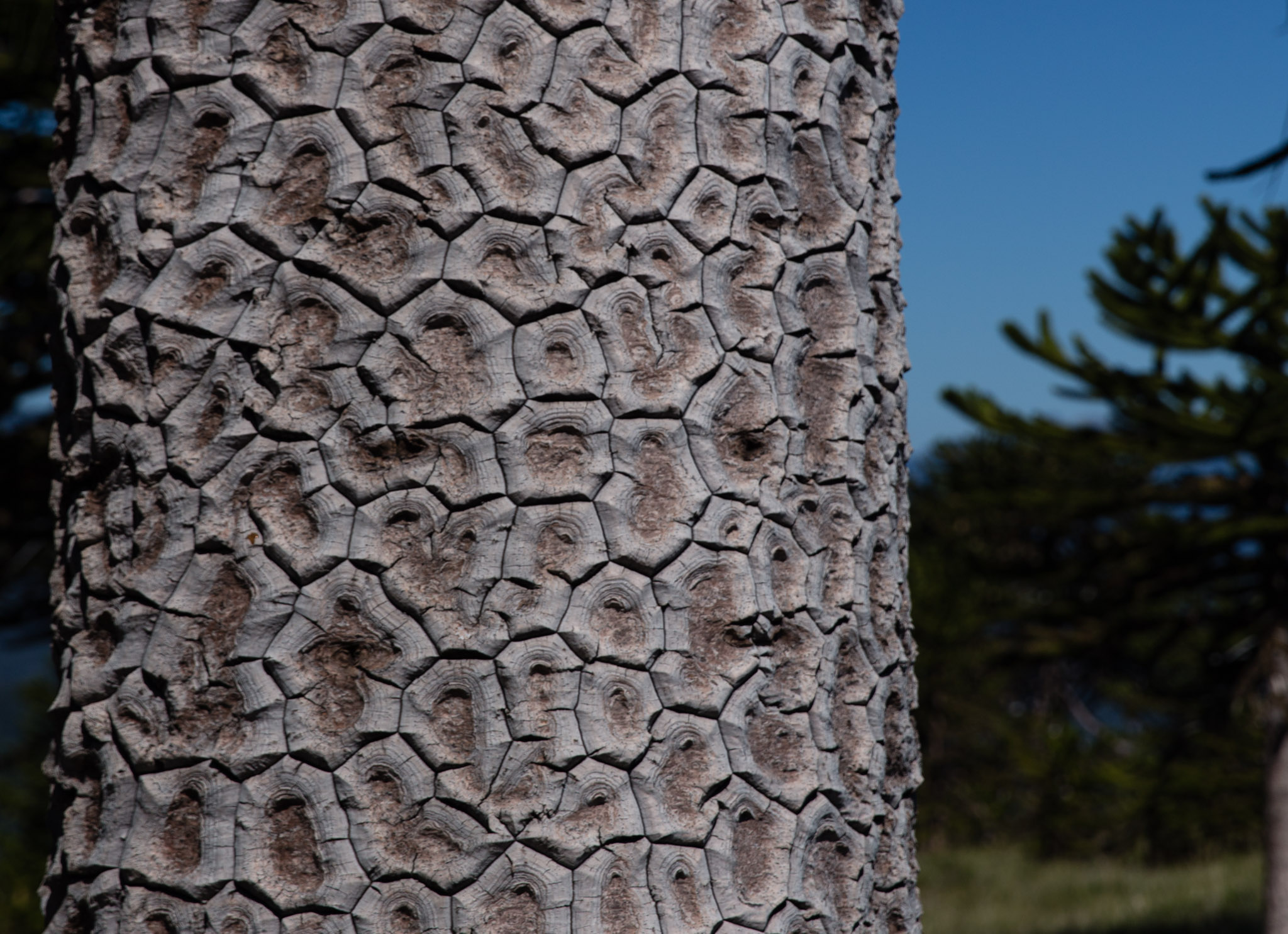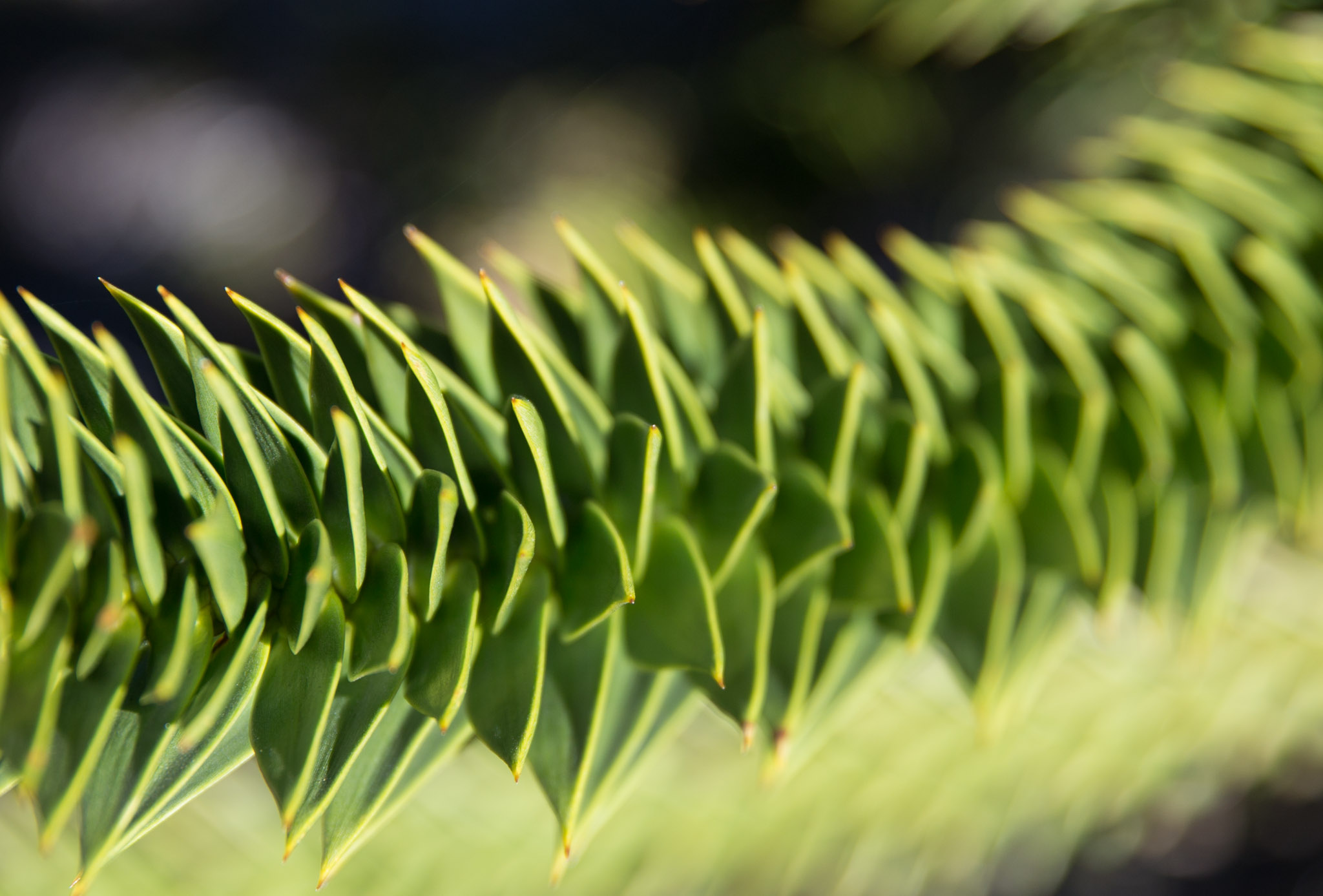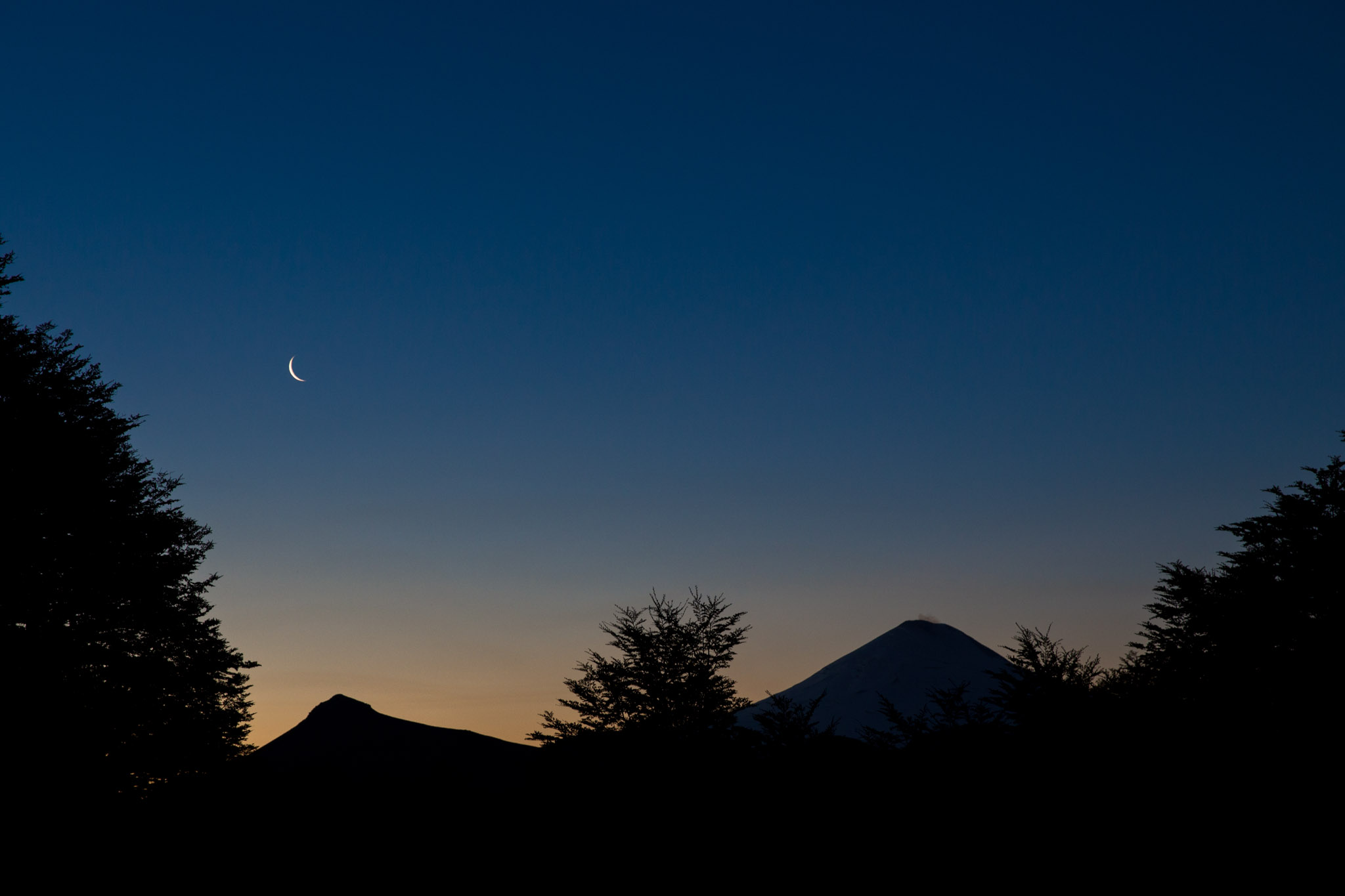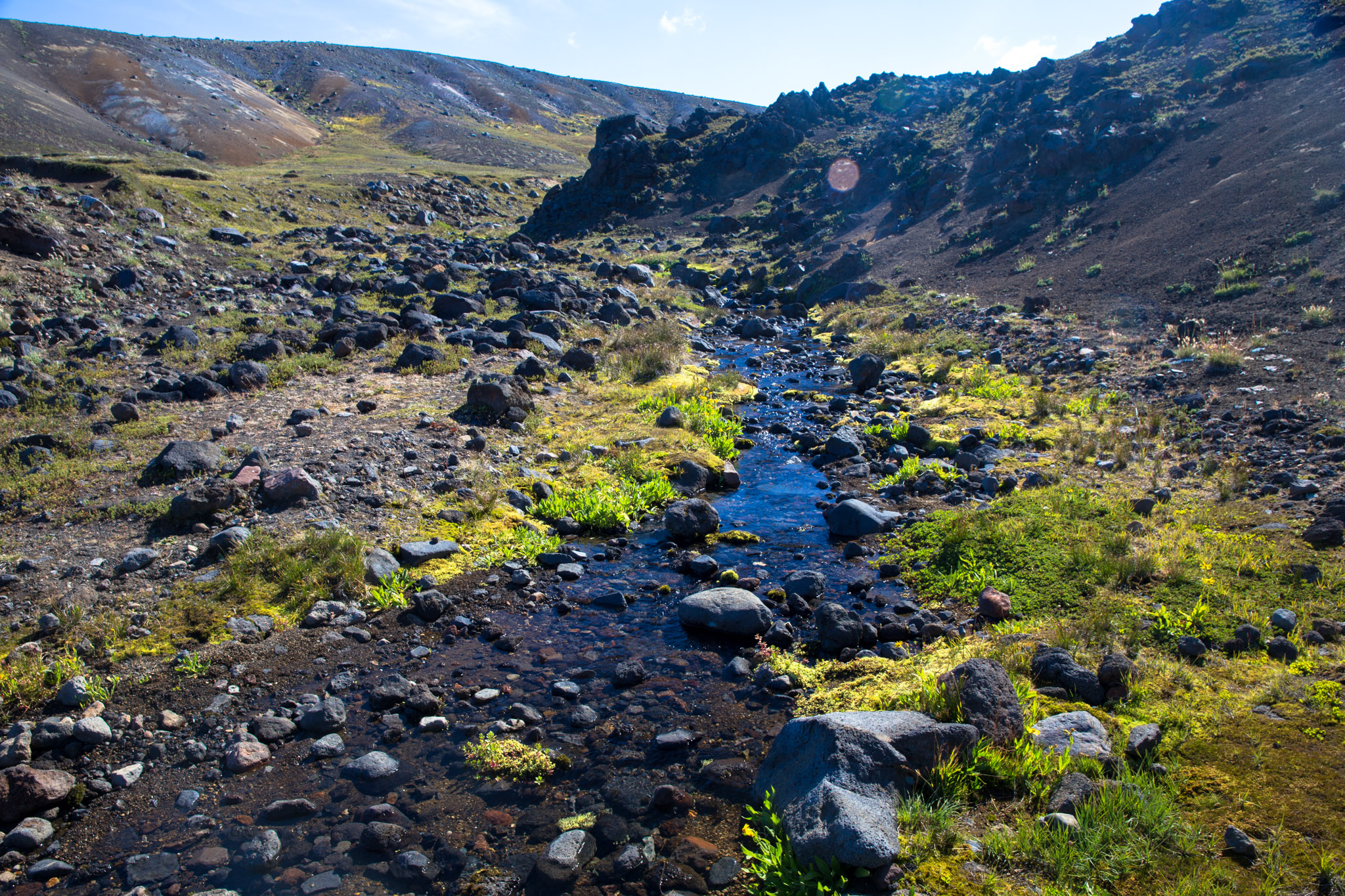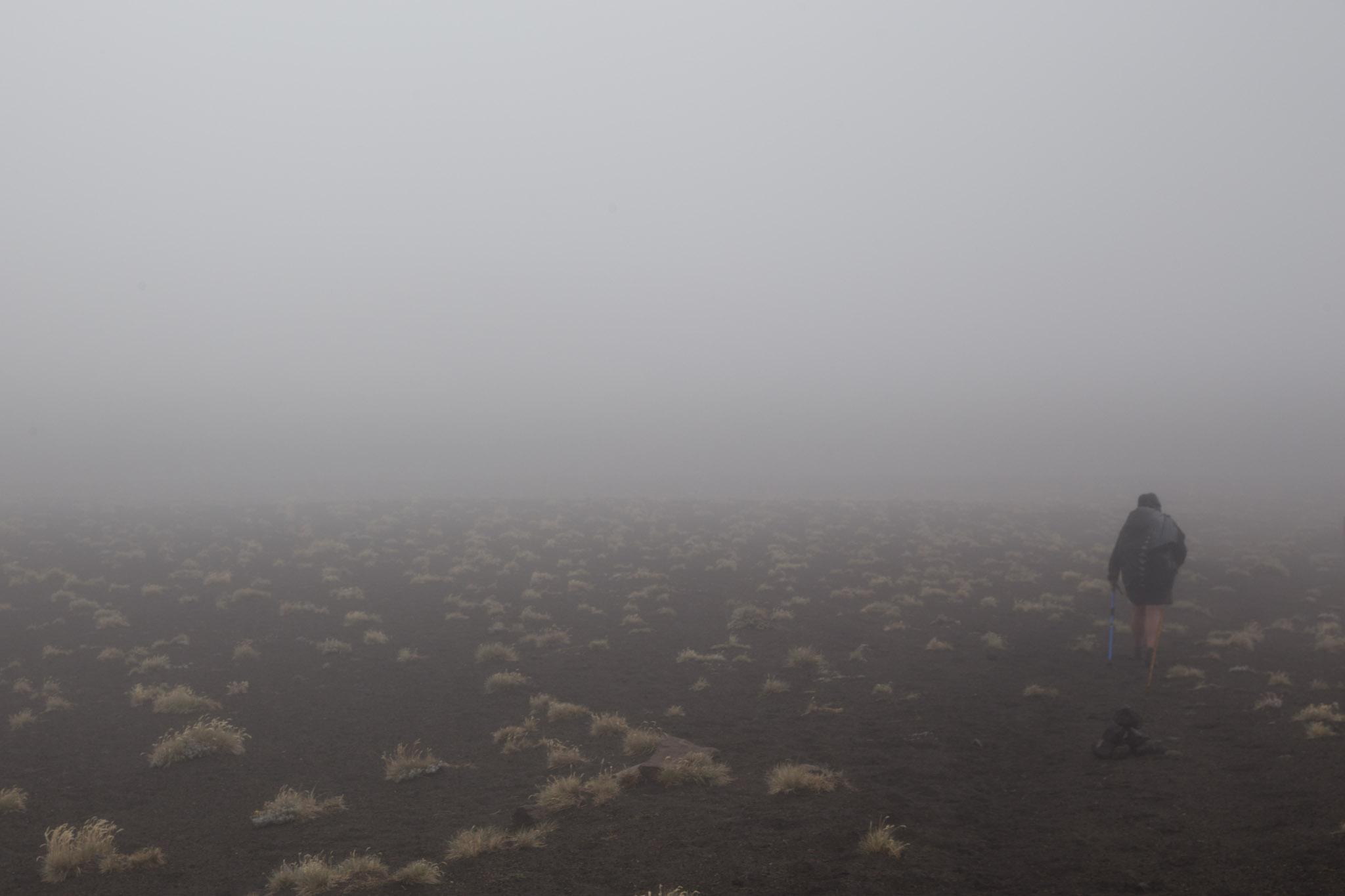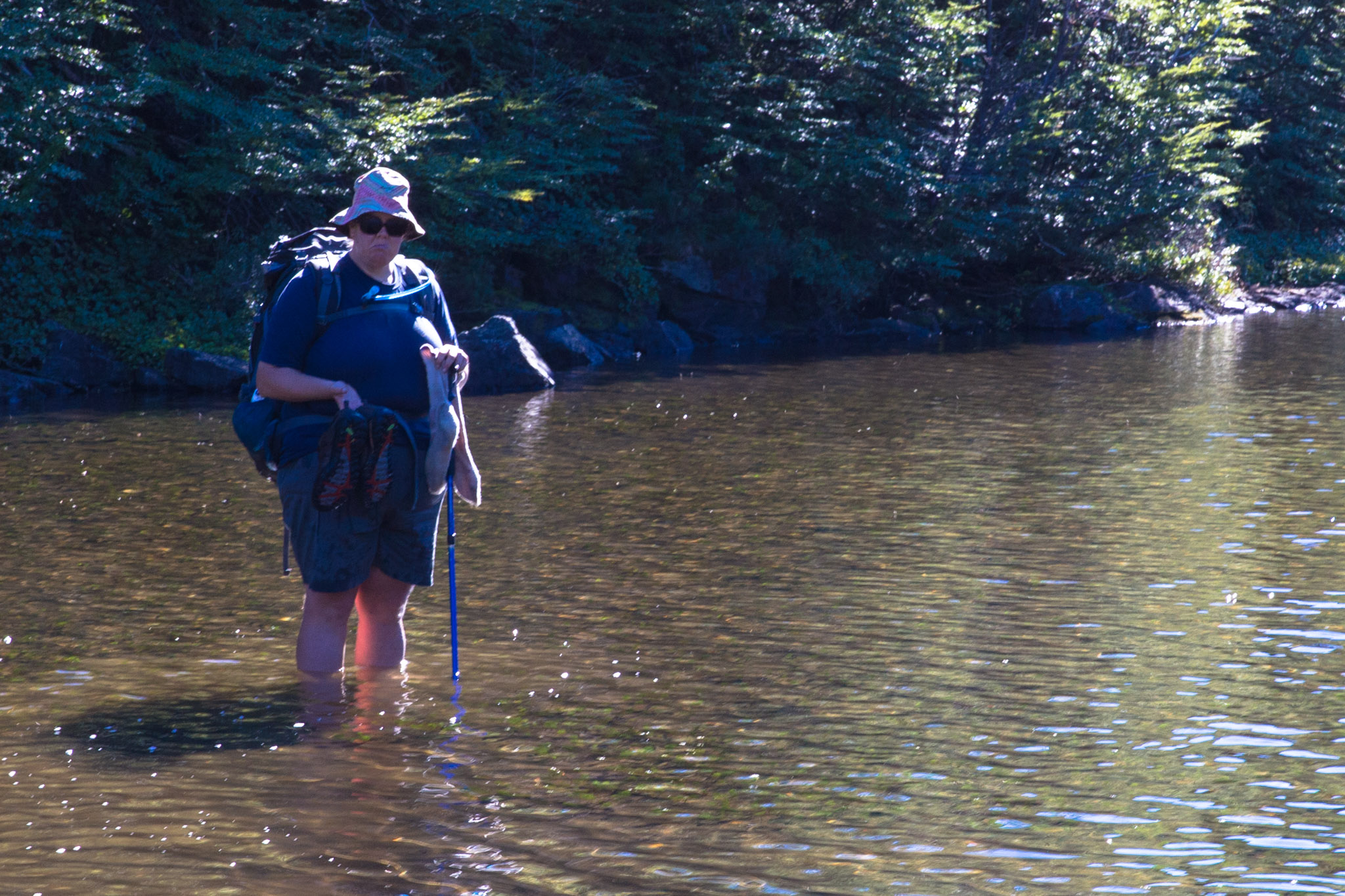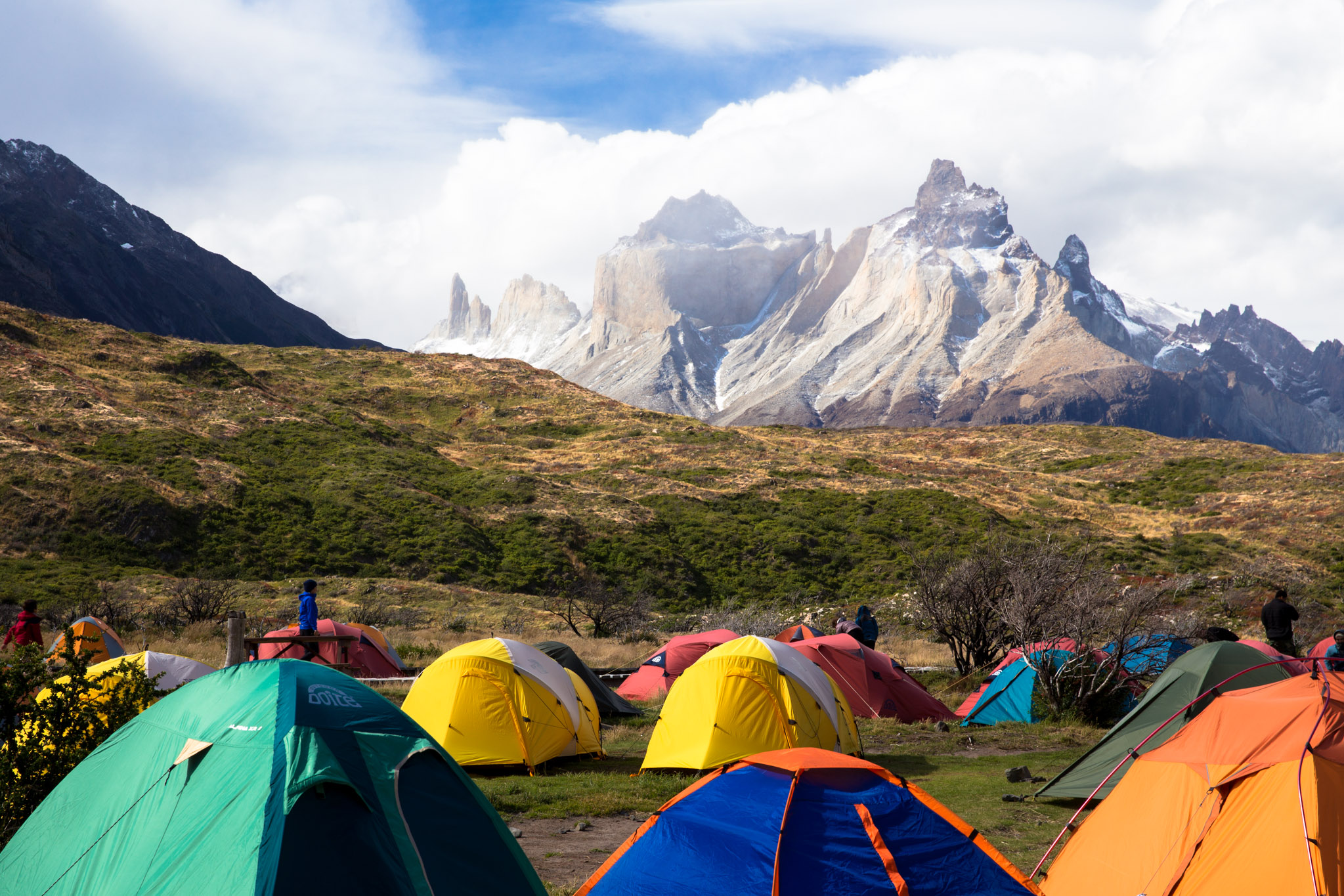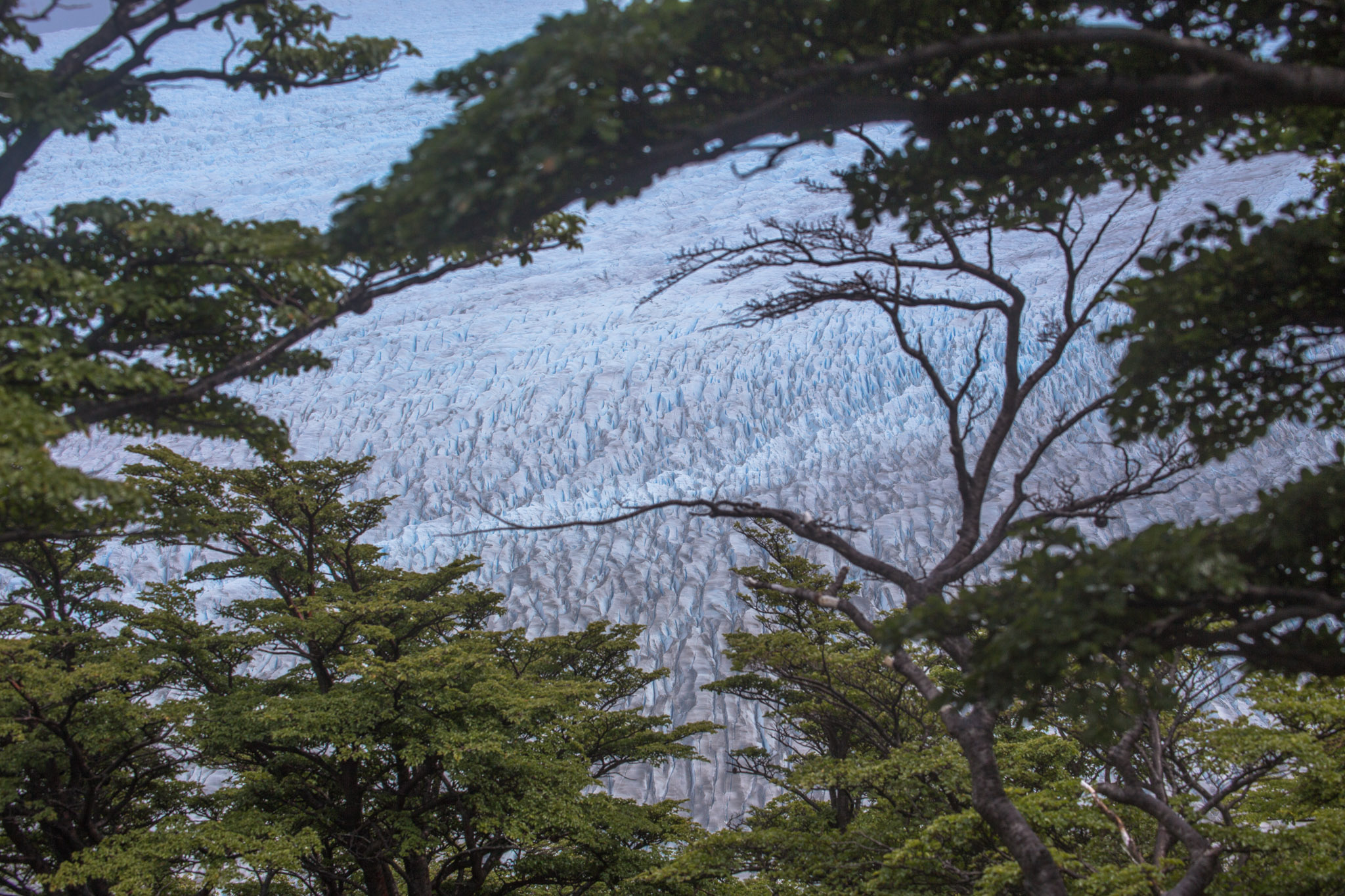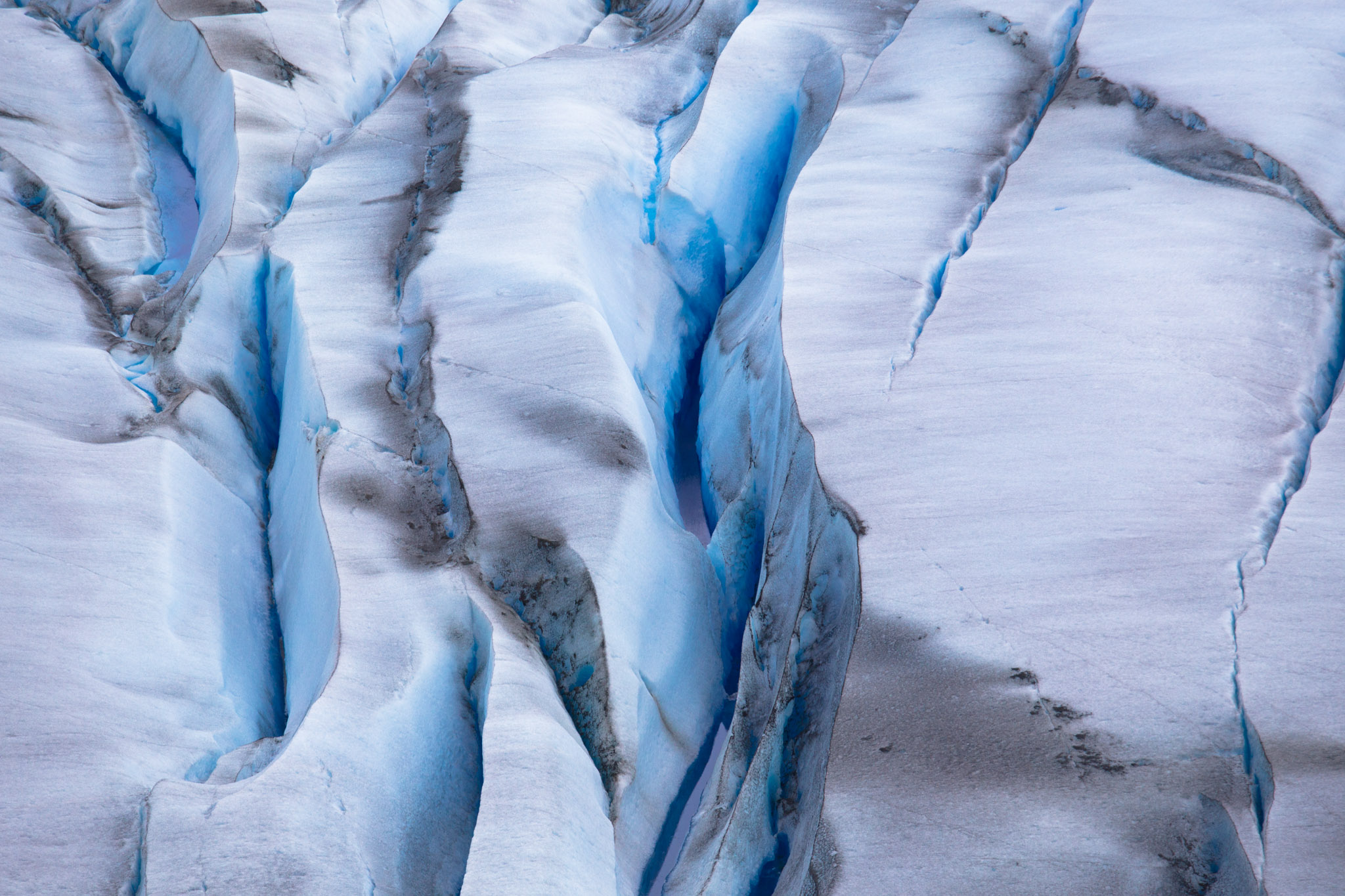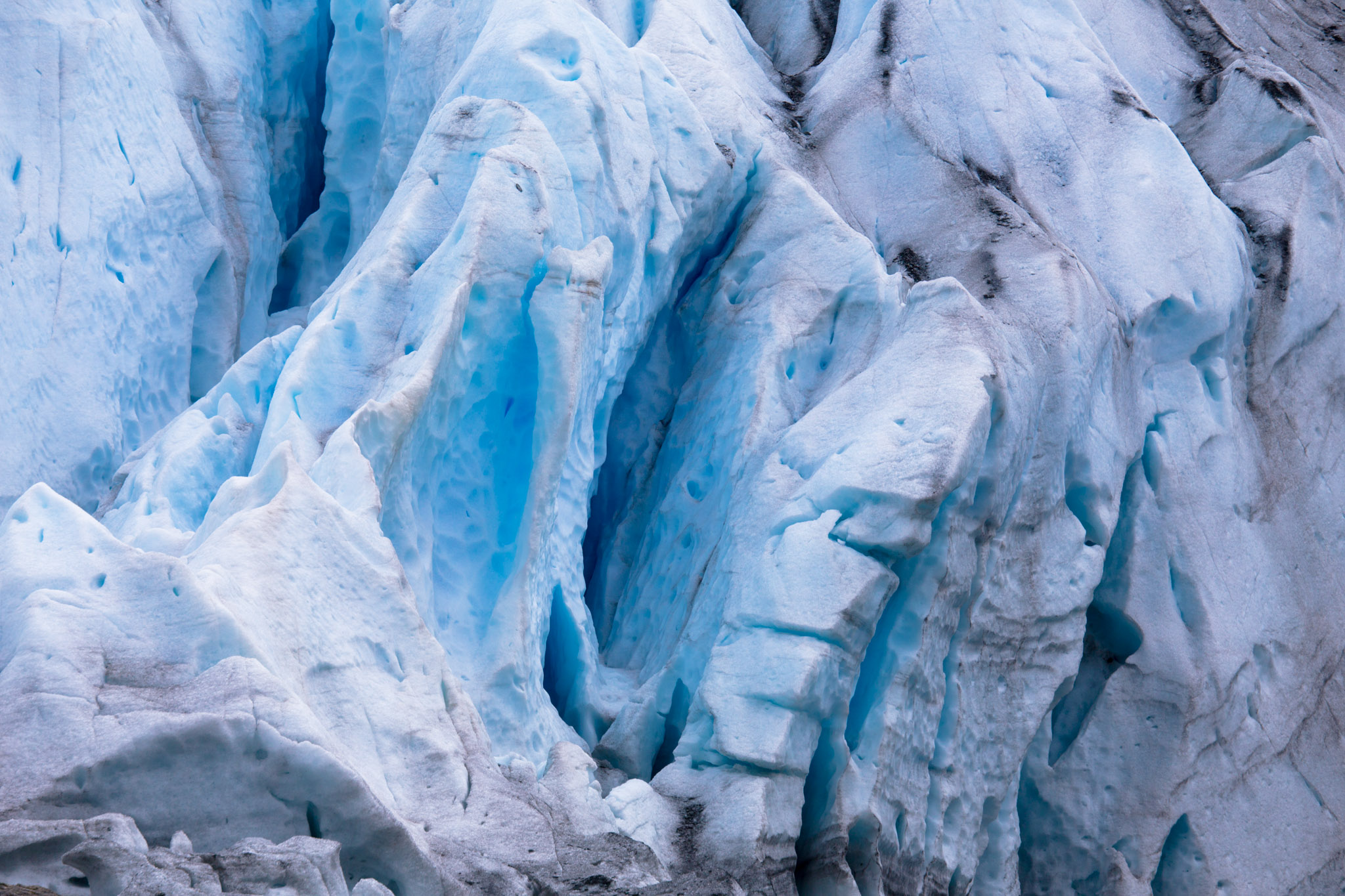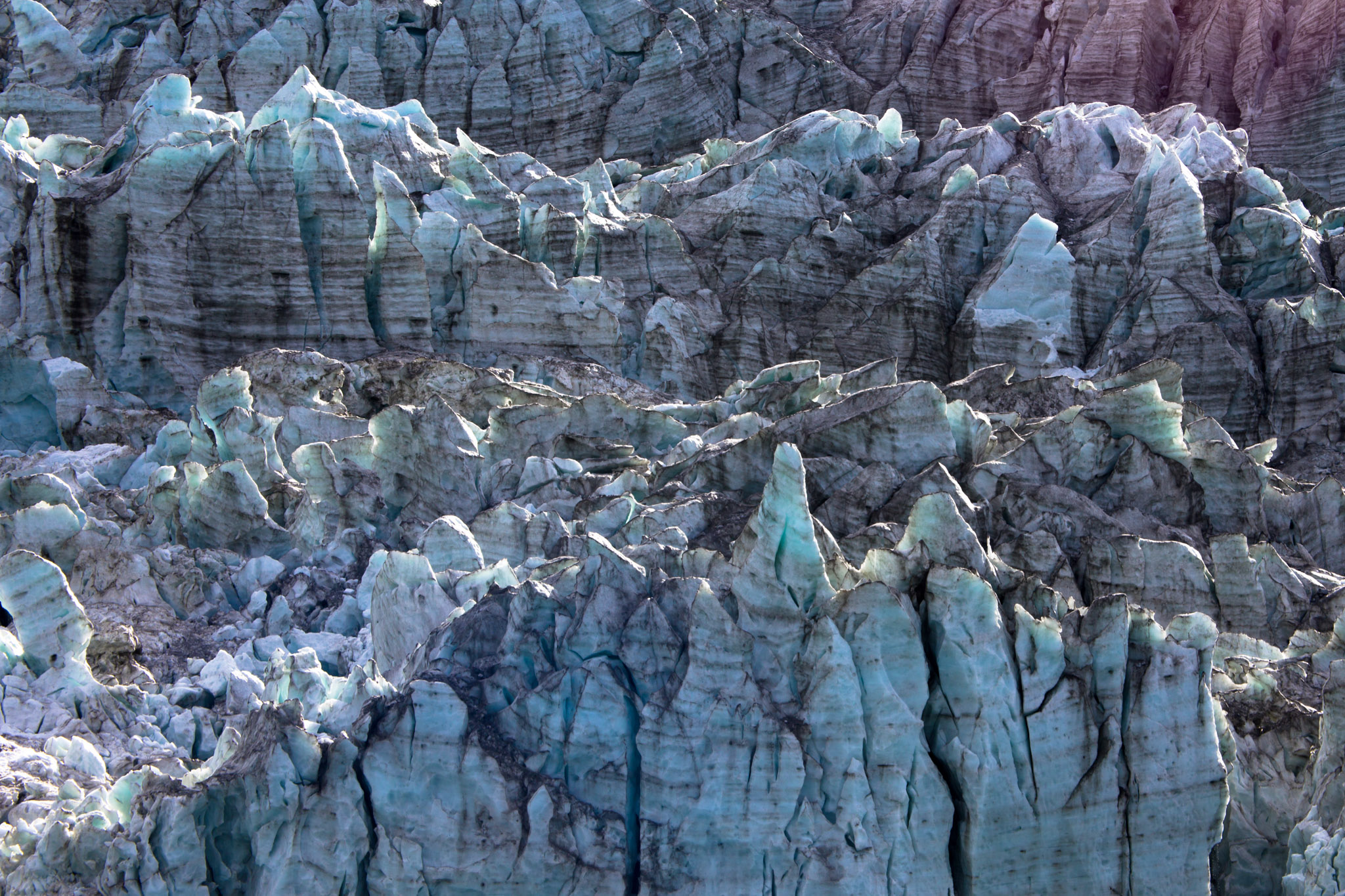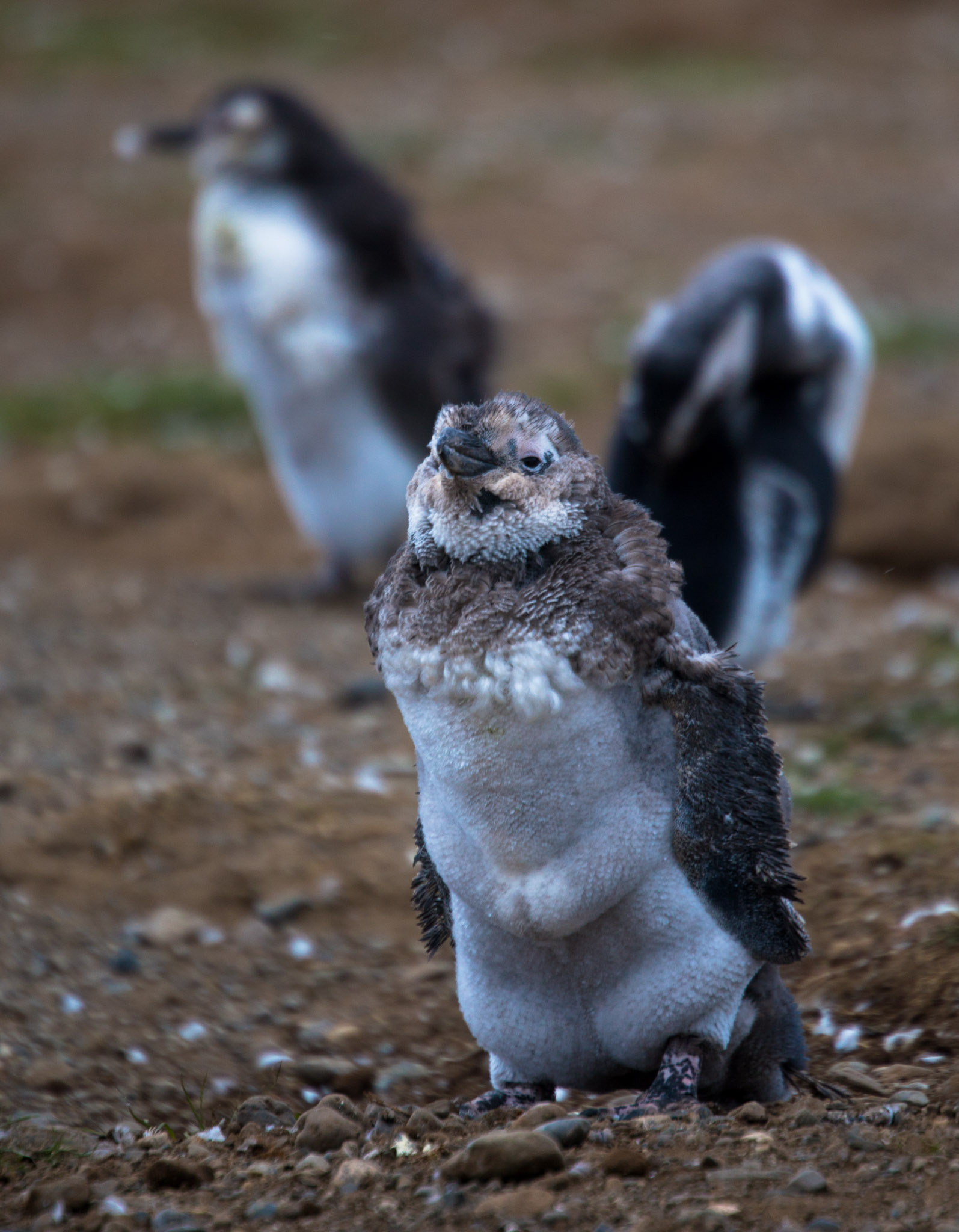Villarrica Traverse, Pucon, Chile
A hike of challenges
With only 10 days remaining before having to be in Santiago for a flight to Ecuador, we were met with a dilemma; to remain in the Argentinian lakes district or cross the border to Chile to wander among her volcanoes. Somewhat frozen by indecision we squandered two days in the pretty but very commercial towns of Bariloche and San Martin in Argentina. We soon realised that one achieves very little in our allocated timeframe without a car in this area.
Our view from the Chili Kiwi Hostel in Pucon
So, filing it in 'places to return to' we decided to push on to Pucon just over the border in Chile where THE thing to do is climb to the top of the Villarrica volcano, which silhouettes the town. It sounded interesting but what we really wanted was a multiday hike with not too many people. A bit of last minute research turned up the Villarrica traverse, a 3-6 day hike, depending on starting point, through the volcanoes of the Chilean Andes. We decided on the 6 days and set about working out logistics.
Day One
Villarricca Volcano, this way.
The hike begins at the same location as the volcano climb, so our hostel arranged transport there with a rowdy tour group of day trekkers, leaving at the dark and cold hour of 6.30am. A miscalculation of people meant we were lucky enough to be shunted off to a ute of one of the mountain guides who happily offered advice and last minute safety tips for watching the weather and navigating in the area. Armed with a excerpt from a hiking guide, the CONAF map and a few images of elevation profiles on the iPhone, we thought we knew what lay ahead. The hike would soon show us otherwise.
The path started at 1550m crossing undulating lava fields, a novel experience for us. It was early still and the sun was just beginning to bite. After several km we were relieved when the path lead us into a forest of wuilllyumbtumumum pines which we shall refer to as dinosaur trees (see picture). Here little green lizards zipped everywhere around us and Magellenic Woodpeckers made their characteristic knocking sounds as they burrowed for insects meters above us. After lunch the path became a little more challenging with many steep undulations into dry river beds. While crossing one of these river beds we noticed water coming downhill, this grew quickly into a stream of water while watched, glad to be on the other side. Then a final accent through more forest to open out onto a recent lava flow area referred to as the Valle del Fuego. Here the guidebook assured us we would find a glacial melt stream and sheltered campsites.
A PhD and an engineer, we devised a 'gravity filtration system' to convert our solid-grey water into the more drinkable kind of grey water.
You might imagine our slight shock to find our water source was actually a rushing river of grey silt. It seems the heat of the day and the late hour had combined to provide us with perfectly undrinkable water. Nevertheless, a bit of engineering and scientific analysis determined a successful method of water purifying. Thusly done by collecting the least silty water from the slow parts of the river using one of the water proof sacks we thankfully had and letting it hang from a tree. An hour or so later the top water could be scooped off, a drinkable shade of grey. Water crisis averted we settled into our camp among great black rolls of hardened lava and a clear view of their source,puffing away high above us. Having previously been assured that it was very unlikely to erupt any time soon, we still felt compelled to keep a watchful eye, anxious of any apparent change in its plume.
Day Two
The elevation profile seemed harmless enough, what appeared to be small undulations with only a few bigger climbs and a final long decent into a river valley to our next camp, 16.5km away. The guidebook promised great views and many different types of lava flows. After a slow start, we continued our journey through the Valle del Fuego. It soon became apparent that lava fields are not all created equal, however for the most part, lava fields are bloody hard to walk through. For a start there are no trees, the burny liquid rock took care of that long ago, so it's full sun all day. Also, lava does not flow in nice flat and uniform patterns but rather creates great obstacle courses to wind your way through. Sometimes the lava flows are scoria, which is essentially like walking through a pile of discarded pumice stones, other times these rocks are mixed with ash and sand so it's like crossing a rocky desert. Being so porous and loosely packed, these desert areas are prone to erosion which means as water from the snow and glaciers above makes its way down, hundreds of creeks and rivers are created. For hikers traversing the mountain, this means the amazing views of far off valleys and mountains were paid for bitterly with continual crossings of deep, sandy, valleys. Pleasant ridge top traverses were too often rudely interrupted. By the 6km mark we were already exhausted. Hot from the lack of shade and beating sun and low on water we decided to stop for an early lunch at a cool, but grey, river. Employing our filtering technique we dipped our feet into the cooling water and waded across while we waited. Reluctant to leave the cool of the river but wary of the time and our lack of progress we pushed on through similar terrain. All the while looking longingly down at the tree line wishing for their cooling shade. After several km we approached yet another river valley but this time flowing with clear water. After a day of grey and brown rivers of silt we excitedly rushed down and emptied our water bottle to exchange for this vastly superior option, taking on a bit more than usual, just incase. [Andrew: I remember Shannan exclaiming in an accusatory tone, 'that water's clear!'] Further excitement was had when we approached the first trees of the day. A small group of dinosaur trees above the usual tree line. We savoured their shade for as long as we dared before begrudgingly returning to the sun drenched path.
A bit shell shocked by the difficulty and heat of the day and with the glorious views gone, the final few km looping around deep valleys seemed torturous. The black gravel reflected shimmering heat waves and intercepted what little breeze there was, corrupting it with its heat. Finally we reached the forested decent, and although Chilean style (an impossibly steep path, causing several slips and one fall) we were relieved for the day to end. Approaching the river we were disappointed to find grey silty water again but the prettiness of the river valley and promise of soup, curry and chocolate heartened us. [Andrew: To our surprise and delight, this stream was clear in the morning. We think it's related to the afternoon melt water flowing through underground, porous rock sections and picking up the silt along the way.]
Day Three
My tree disguise fails me at this altitude.
We knew before we started the hike that this would be the most difficult day. In total we were faced with 1100m (vertical) accent and 700m descent over 16.5 km, tough by anyone's standards. We started the day early and actually rather enjoyed the first few km, on the practice hill 200m up and 250m down along a rough 4WD track in the shade of tall trees. The more popular route for the Villarrica hike is a shorter three day option which starts 5km from our campsite at a ranger hut. Once we reached this outpost we knew our task; Sitting at the bottom of a deep valley the only way was up. I'm too embarrassed to admit how long it took us to up climb those 900m. It was hot, so very, very hot. With little breeze and often full sun we were drenched in sweat and totally sapped of energy. Nevertheless using the the great hikers tricks of counting, humming a well paced song, taking timed breaks and swearing at the hill we got there and Wowzers what a view. We had been warned that clouds often interrupt the vista but it was our one compensation for such a warm day that we had a cloudless sky. Volcanoes surrounded us and lush green valleys rolled down their sides. Several condors flew overhead and a whiff of breeze gave us welcome relief. The next few hours sent us over a steeply undulating ridge. Tired from the day and out of water, we were a tad concerned when it reached 7pm and we were still not at our planned campsite. After spotting a landmark about 2.5km from the camp we picked up the pace and made it there by 7.30pm but our woes were not over. As we approached I became concerned that I could not hear the familiar sound of running water that one is usually greeted by at the end of the day. Our hearts sunk when we spotted the rocky bed and stagnant pools of our promised water source. Faced with a setting sun we decided that I would stay to make camp and begin boiling the water from these pools while Andy, armed with containers would scout ahead 15 minutes to see if water was to be found. In our first bit of luck for the day, he found a clear flowing creek right on the edge of the time limit, we were saved. That night the stars came out for us. Totally isolated and in perfect darkness we were spoilt with amazing clarity of galaxies, gas clouds and meteors. As we finally climbed into bed after over 11 hours of hiking not even an erupting volcano could have woken us. [Andrew: An absolutely amazing night sky. I have never seen it so impressive before!]
Day Four
I assume someone else wanted a rest from the descent too.
Allowing ourselves a sleep in, we packed up and moved to the creek found the previous day to cook breakfast and refresh our water supplies. Relaxed by the prospect of an easier day we fairly strolled up the second mountain. Spotting a few remnant patches of snow Andy had the genius idea of making snow cones with the ice and some powdered cordial. We were so pleased with ourselves as we wandered back down the pass that we failed to notice the weather closing in. Looking back at the view we had just been admiring we saw a wave of cloud coming for us. As we descended we caught fleeting glimpses of the Lago Azure below. By the time we reached the lake for lunch the weather had arrived. Huddled in a group of trees protecting us from the freezing wind we laughed at the memory of how hot we had felt the day before.
Marching on after lunch through lava fields our visibility was reduced to a few metres. I gave a start as, through the fog, a caravan of horses appeared in front of me, the first people we had seen in 4 days. Pushing on through the now horizontal rain and the less than cheery afternoon, I had to laugh at poor Andy as he suffered a blow out of one of his thongs trying to fjord a swollen creek. After a few hours we began to look for our campsite. The guide book promised a small lagoon just off the path, assuring us that we would spot it from a viewpoint before descending to it. Well that proved to be impossible! When we arrived at the area we thought it might be there was no sign. Reluctant to stray too far off path in such low visibility we slowly marched on looking for clues of a side trail. After some time Andy remembered the offline GPS maps on his phone he had downloaded. Our campsite, it seemed, was a few km behind us. Here we made the fateful decision to keep trekking ahead until we found somewhere suitable, neglecting to fully comprehend that we would have to climb two mountain passes, one of which was the highest point of the trek at 1900m.
Cooking some soup to warm us up. Our initial concerns about cooking inside the tent from the very start of the holiday are now long gone.
Needless to say we didn't find a suitable campsite there! Walking at full speed we pushed on, racing the setting sun. My poor backside was numb from the wind and rain, our shoes sodden. We reached the second pass just before 7pm and the clouds parted to show a fabulous view of small lakes, lush green plants and dozens of waterfalls. We were now but 4km from the next days camp, having walked most of day 5 in our haste. As we descended further, a condor wove its way through the wind and landed on a cliff nearby. Still anxious of the time and not having found a campsite we charged on through swampy marsh. There was much relief when we arrived at a group of trees next to a small river with space enough for our tent. Freezing, we hastily erected the tent and jumped inside. It took most of an hour and a good serve of pumpkin soup to stop the shivering. We had to laugh though and wonder what else this trek could throw at us...
Day Five
Cows. That' s what.
After 30 minutes walking from our makeshift camp we reached the lake we had failed to reach the day before. As we entered the clearing we spotted the cows. My heart sunk once again when I noticed the large bull standing directly on the path. He had his harem of cows and calves and was prepared to protect them. He spotted us early on and sent out the warning moo. As we crept closer he put his head down and stomped his foot. At this point I made a hasty retreat begging Andrew to follow me back to a safe distance to assess the situation. There was a small stream we had to cross with steep sides, thick spiky bushes all around and cows scattered far and wide. Mr. Bull continued to stare us down, stomping every now and then for good measure. We decided that a side berth might allow is to rejoin the path a little further on. As we started to traverse sideways a group of curious calves trotted towards us. This induced the ire of our bovine nemesis, at which point he ran towards us and the calves. Letting out a little whine I hid in the thick bush begging the calves to go away. We pushed further through the dense bush and arrived at the lake front. Assessing the situation we realised there was only one safe option; hike through the lake. We knew from the guide book that the campsite had paths to the sandy beach on the far side and we could rejoin it there. Mercifully it was warm and crystal clear though a little rocky. Free from danger and bemused by our situation we regrouped on the other side. Andrew vowed to eat a hamburger upon our return to civilization. The rest of the day was easy after that! Because it was the last day we had one final hurdle to jump, hitching a ride back to Pucon.
The hike ends at a gravel highway a few km from the Argentine border. We had been assured by locals that we could hitch a ride no problems. I think Andy's thumb must be broken because no one stopped for us...though the way we looked (and smelt) after 5 days hiking I can't say I blame them! We did eventually arrive at a ranger outpost where we were told to wait for a bus that may or may not come in two hours. Two and a half hours later we were very relieved when a clapped out little mini bus pulled up. A change of bus an hour later and we were back in Pukon and boy did that hamburger taste extra good.

